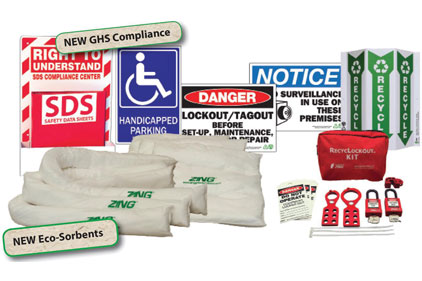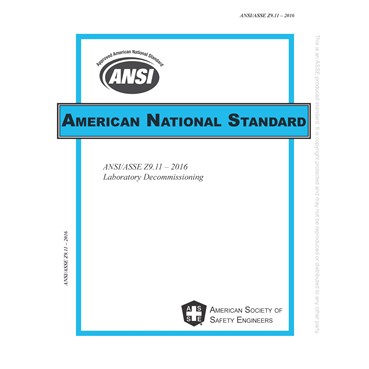The advantages that come with green safety products are clear. Items made from vinyl, plastic or aluminum can exist in landfills with little degradation for potentially thousands of years. Eco-friendly options made from recycled, renewable or biodegradable materials help avoid this problem and are easy to implement.
Businesses and customers alike want to know that their choices are facilitating a safer future. As a result, green safety products are becoming more popular. Categories include safety and traffic signs, PPE workplace protection, lockout/tagout kits, devices, padlocks and many more. These products are now readily available through mainstream distribution. It has never been easier for companies to go green while simultaneously protecting employees.
Eco options
The rapid growth of eco-friendly products has created a large array of products to choose from. Indeed, the sheer number of products purporting to be environmentally friendly can sometimes lead to difficult choices for customers.
How can one know if a safety product is truly green?
Environmental properties in the material such as recycled content as well as environmental regulations and guidelines can be good sources to making informed product selections.
Recycled materials are a key component of modern waste reduction and include many kinds of glass, paper, metal, plastic and textiles.
Safety products made from recycled materials typically include pre-consumer (also referred to as post-industrial), post-consumer or a combination of both. Pre-consumer materials are made from manufacturer waste such as scrap and trimmings while post-consumer material is derived from products that have been used by consumers, disposed of and remade into another product. Post-consumer recycled products are considered to have the most environmental benefit because they have been repurposed at least once. Whether the product has pre-consumer, post-consumer or a combination of both materials, choosing products with the higher level of recycled content is the obvious better choice.
Other eco options include biodegradable and compostable materials. Biodegradable products are capable of decomposing under natural conditions. This term can be deceiving as many products eventually decompose over periods of time, such as a glass bottle will decompose after a million years. Truly eco-friendly biodegradable products will break down in a reasonably short period of time such as 1 year for solid waste products.
Compostable products are also biodegradable, but with an added benefit. When they break down, they release valuable nutrients into the soil, aiding the growth of trees and plants. These products degrade within several months in an industrial composting facility and produce no toxic residues. Products that are compostable are typically the better choice over biodegradable.
In addition to material content, both federal and independent agencies offer programs to help ensure legitimacy. The Federal Trade Commission has published a Green Guide that outlines general principles that apply to all environmental marketing claims and provides guidance on specific green claims such as “biodegradable.” Likewise, the U.S. Green Building Council's LEED (Leadership in Energy and Environmental Design) program has developed a rating system for green construction based on measurable credits. In addition to these programs, many green products and companies are also third party certified by companies that provide independent proof of a product's claims, such as UL (Underwriters Laboratory). These programs give customers assurance that their efforts to buy environmentally friendly products will not be taken advantage of.
A safe choice
Making informed safety product choices not only in product design but in the sustainable material quality will have a significant impact on worker protection and the environment. Combining good safety practices with environmental practices is a powerful commitment and reaps many rewards, including reducing the potential for worker injuries and the amount of waste that reaches landfills. Safety and environmentalism need not be mutually exclusive terms but interdependent ones that together will create a better, safer and more productive workplace.






